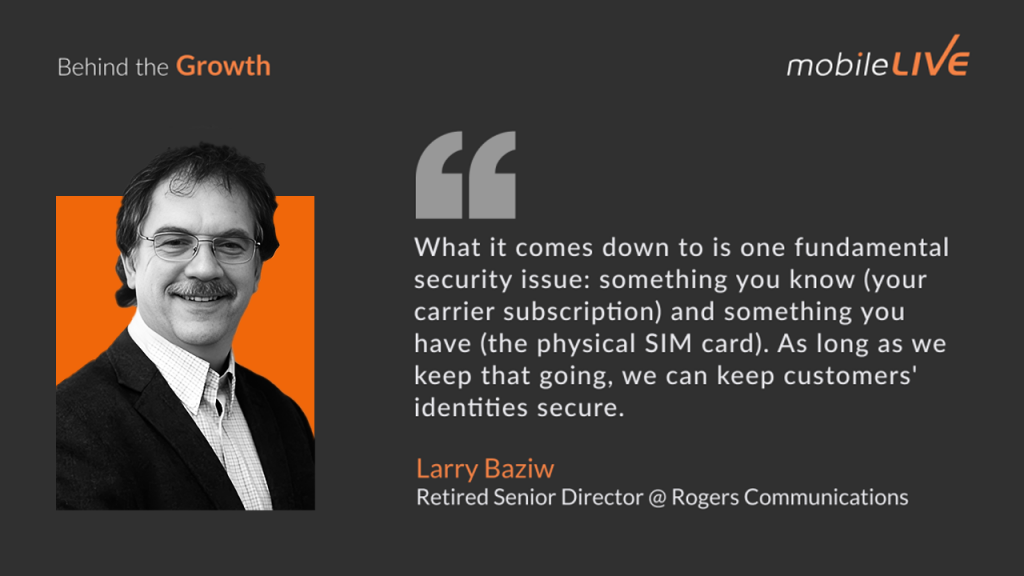Key Insights
The Evolution of eSIM Technology
Larry Baziw highlights the transformative impact of eSIM technology in the telecommunications industry. He discusses its role in simplifying consumer experiences, enabling seamless device integration, and fostering innovation in device connectivity. Larry elaborates on how eSIM technology negates the need for physical SIM cards, thus facilitating easier management of multiple network subscriptions and enhancing security. This evolution marks a significant shift towards more adaptable and efficient communication solutions, promising a future where devices can connect more intuitively to networks, ultimately benefiting both consumers and service providers.
Blending Engineering and Music: A Unique Professional Journey
Larry shares his unique career path, which started with aspirations in music and transitioned into a pioneering role in telecommunications. Initially aiming to become a conductor, Larry’s journey took a turn towards electrical engineering, leading him to significant contributions in medical engineering and subsequently, the telecom industry. His work in integrating imaging and networking with cellular technology has been instrumental in advancing telecom solutions. Larry’s story exemplifies how diverse passions can converge, driving innovation and creativity across different fields.
Future Prospects: eSIM’s Role in Expanding Connectivity
Larry discusses the future possibilities opened by eSIM technology, especially in enhancing device interoperability and expanding connectivity beyond traditional devices like smartphones. He envisions a future where vehicles, home security systems, and other IoT devices seamlessly connect to telecommunications networks through eSIM technology. This will not only improve user experiences but also enable new business models and service offerings, showcasing the potential of eSIM to revolutionize how we interact with technology in our daily lives.

Episode Highlights
The Revolutionary Impact of eSIM Technology on Telecom and Consumer Flexibility
Larry Baziw discusses the transformative influence of eSIM technology on the telecommunications industry, highlighting its capacity to simplify customer experiences and streamline device connectivity. He underscores eSIM’s advantage in eliminating physical SIM cards, thereby facilitating easier management of multiple network subscriptions and enhancing security.
“Today, you can actually get someone activated and out the door in minutes with an eSIM […] eSIM, by digitizing that, you have a huge opportunity to simplify and create better experiences at the retail point of sale for onboarding customers as well as getting new phones and switching between phones easily.”
The Convergence of IoT and eSIM: Expanding Connectivity Beyond Smartphones
Larry expands on eSIM’s role in broadening connectivity to include not just smartphones but also vehicles, home security systems, and other IoT devices. He illustrates how eSIM technology enables seamless integration of various devices into a user’s network, paving the way for innovative business models and service offerings.
“You can start to look at location services in long haul freight and tracking inventory […] with cellular enablement and eSIM swapping, the ability to enable services to do remote locations and getting data from those locations to let you know that there’s just, keep alive once a month.”
Addressing Identity and Security in the Age of eSIM
The dialogue shifts to the critical aspects of identity and security within the eSIM ecosystem. Larry discusses the ongoing technical advancements and the need for robust security measures to protect against misuse. He stresses the importance of maintaining a balance between innovation and security.
“Something you know, your carrier subscription, and something you have, the physical SIM card […] as long as we keep that going, it’s a key piece that will allow us to keep customers’ identity secure and less likely to be misused by bad behaviors.”
eSIM’s Role in Enhancing Customer Onboarding and Retention
Larry explores how eSIM technology simplifies the customer onboarding process and aids in retention strategies by making it easier for consumers to switch or maintain their telecom services. He highlights the operational and customer service benefits of eSIM, facilitating a smoother transition for customers looking to change carriers or subscribe to new services.
“So simplifying that experience and saying, ‘How do I bring someone who wants to come to my company in easily by getting them into more of a digital eSIM product rather than waiting for physical SIMs?’”







